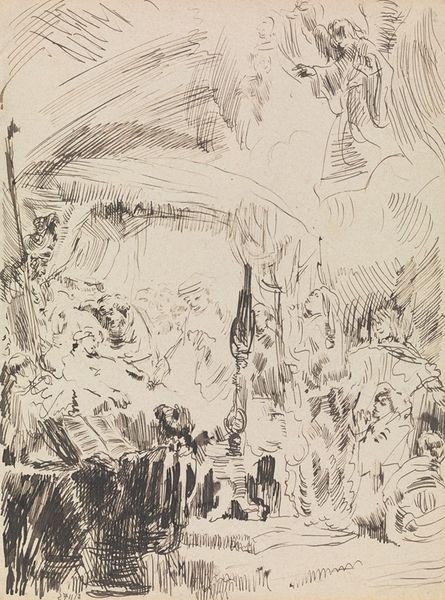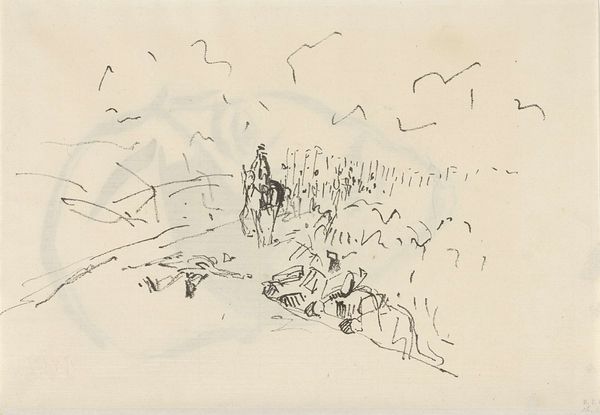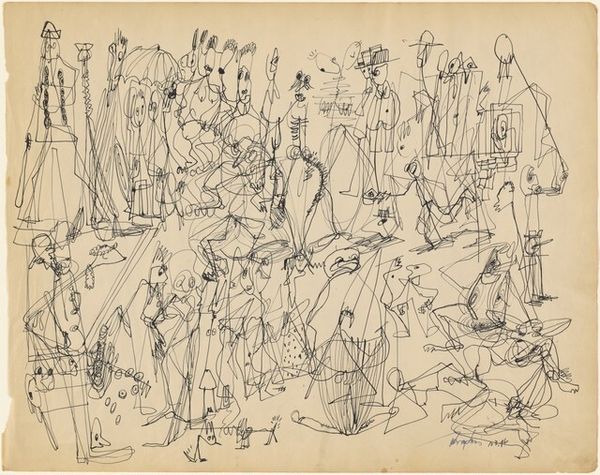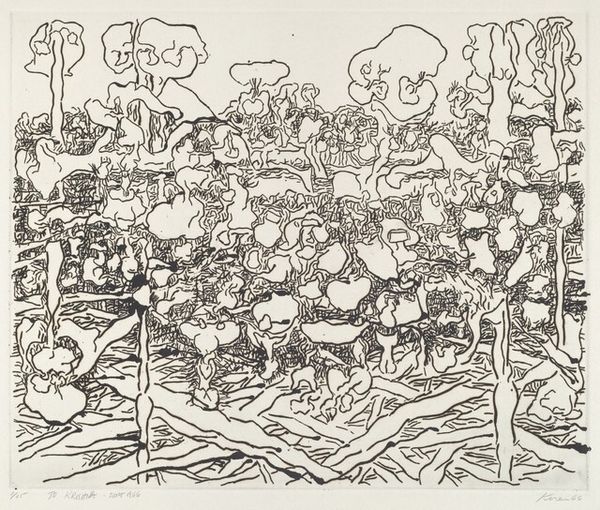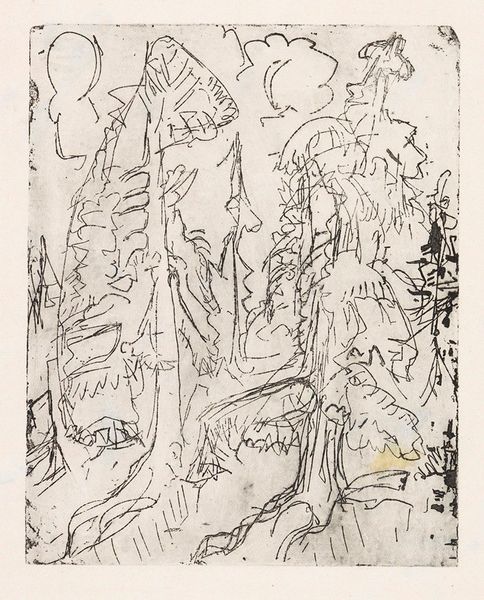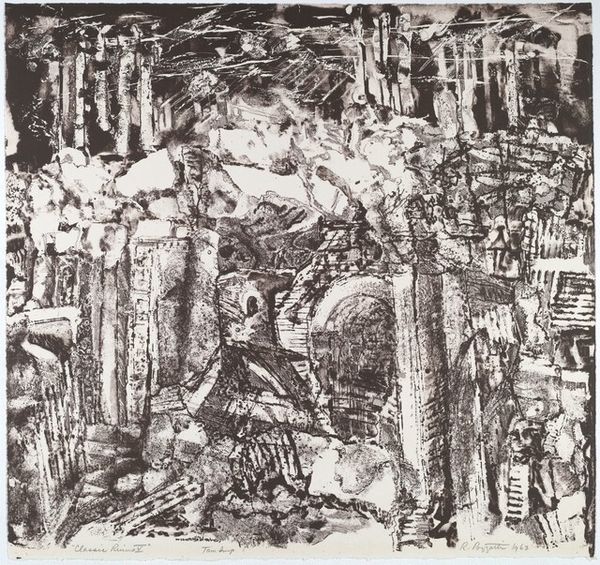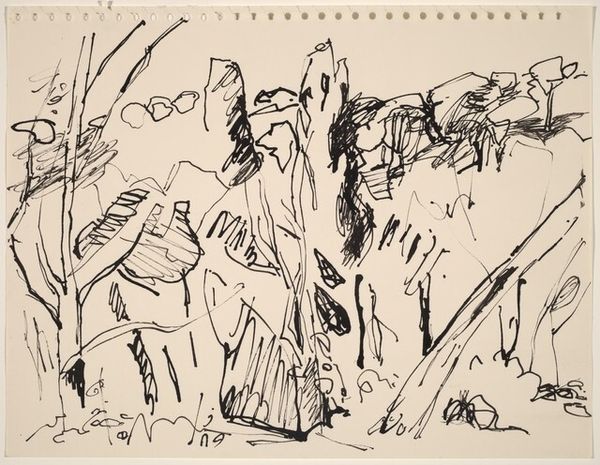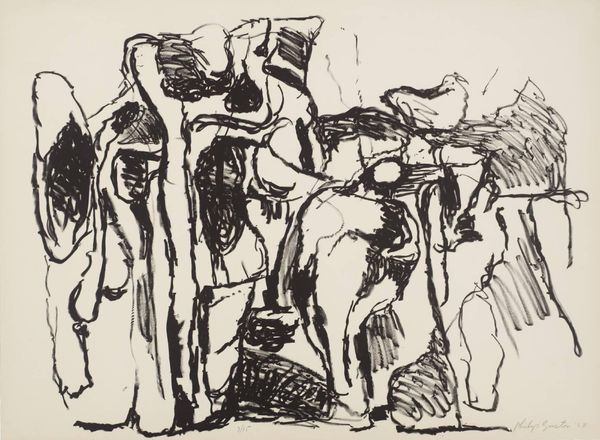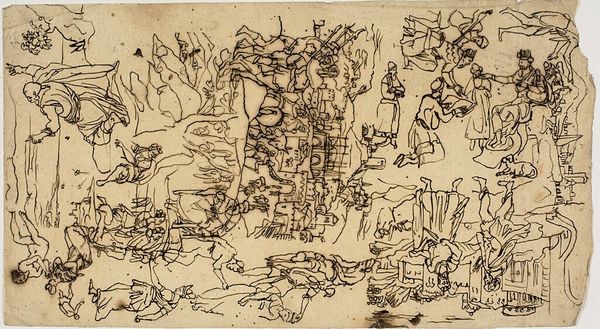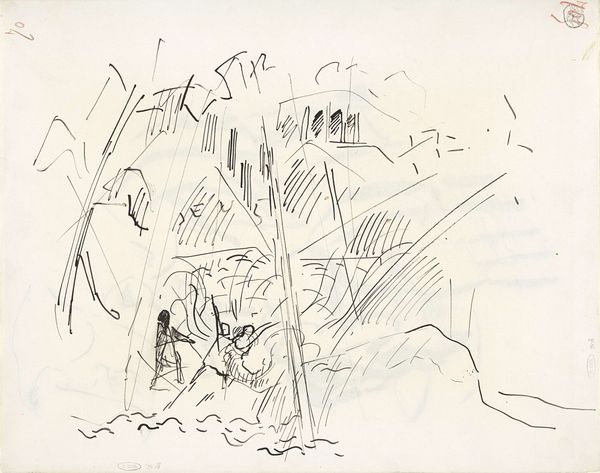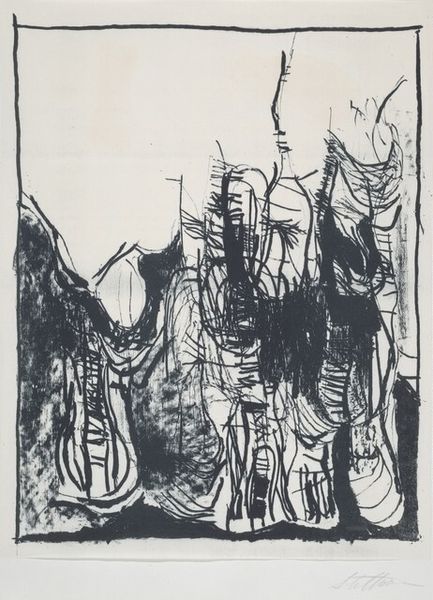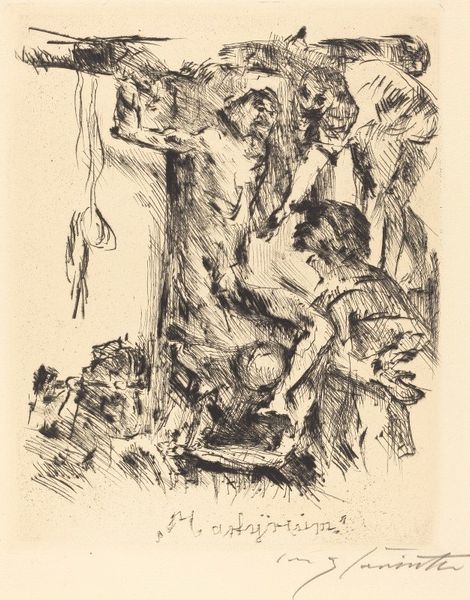
drawing, ink
#
abstract-expressionism
#
drawing
#
ink drawing
#
narrative-art
#
pen sketch
#
figuration
#
ink
#
sketch
#
line
#
modernism
Copyright: Walter Battiss,Fair Use
Curator: The stark, black ink lines of Walter Battiss's "Primordial Scene" give it a certain energy. It feels raw, almost unfinished, doesn’t it? Editor: It certainly does. The frantic lines make me feel claustrophobic. Almost like a snapshot of some buried memory unearthed. The penmanship really accentuates the discomfort. Curator: Well, it's apt given that it's titled "Primordial Scene." We're looking at an ink drawing, a collection of abstract figures that recall early modernist experimentations with line and form, somewhere between sketch and final piece. You'll notice the various densities of ink create the image itself, the light and shadow of the figures coming together on the blank field of the paper. The choice of using something so elemental as ink contributes to the thematic essence that its title so clearly aims to project. Editor: I find it interesting that you point that out. Considering the time in which it was likely produced, it makes me consider the socio-political forces. Was this artist actively reacting to a time of perceived historical advancement? In what way does it respond to a new societal perception of modern life, either opposing or accepting this new shift in a world it understands? Curator: Precisely. Battiss's sketch plays with these notions, contrasting his art with what existed or what came before. It presents figures not rooted in realism but rendered like primitive sketches—shadows of humans struggling in the deep time of becoming. The deliberate use of rudimentary techniques, line, and form challenges the audience's perception of what it truly means to make art. What kind of labour and craft produces value. Editor: Yes, it makes me think of the museums and institutions shaping how art is consumed. Did Battiss see himself challenging artistic boundaries by exhibiting something that could be considered “unfinished”? What would his target demographic be receptive to and how would it change the perception of this piece? Curator: Ultimately, I think the artwork pushes us to ask such questions. It is not necessarily about an "answer" but to invite the viewer into its world. To ponder and consider what could be happening outside the immediacy of this piece, a larger understanding of ourselves, the world and all its limitations, too. Editor: A provocative and engaging creation, indeed.
Comments
No comments
Be the first to comment and join the conversation on the ultimate creative platform.
